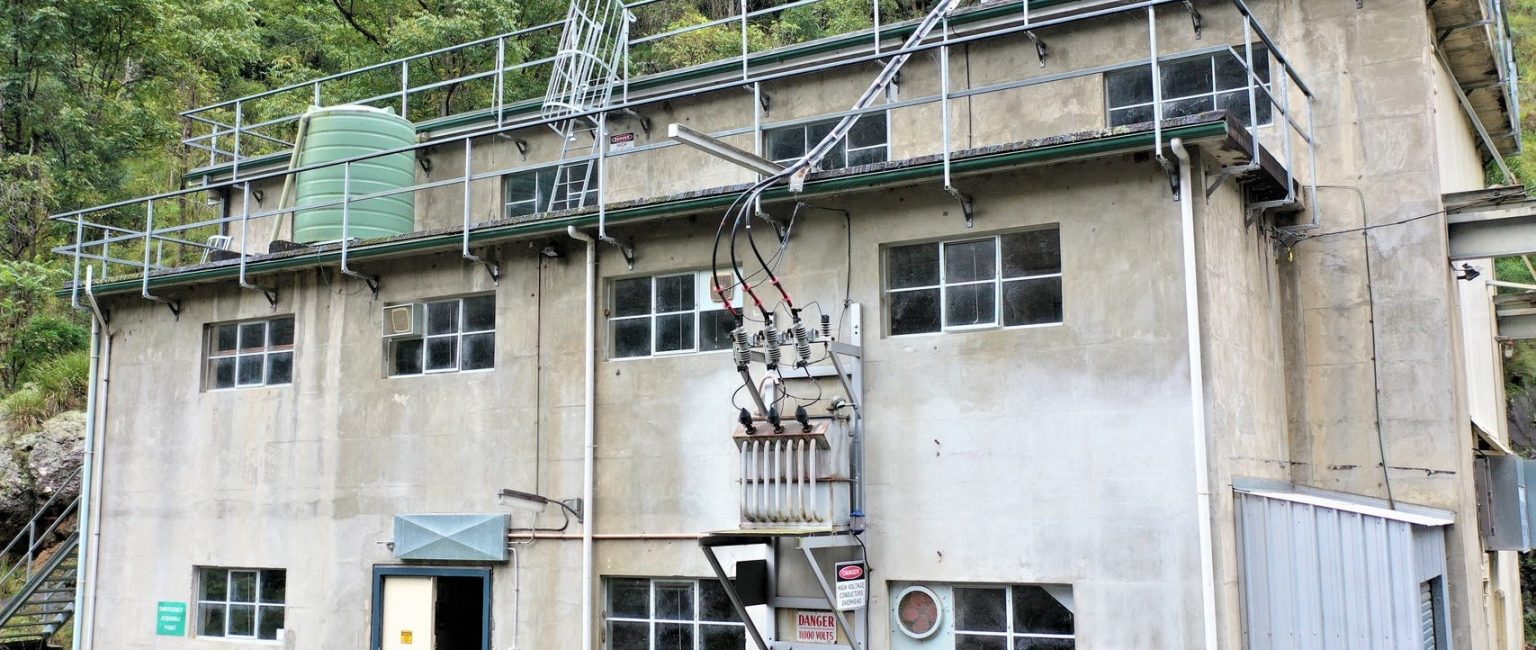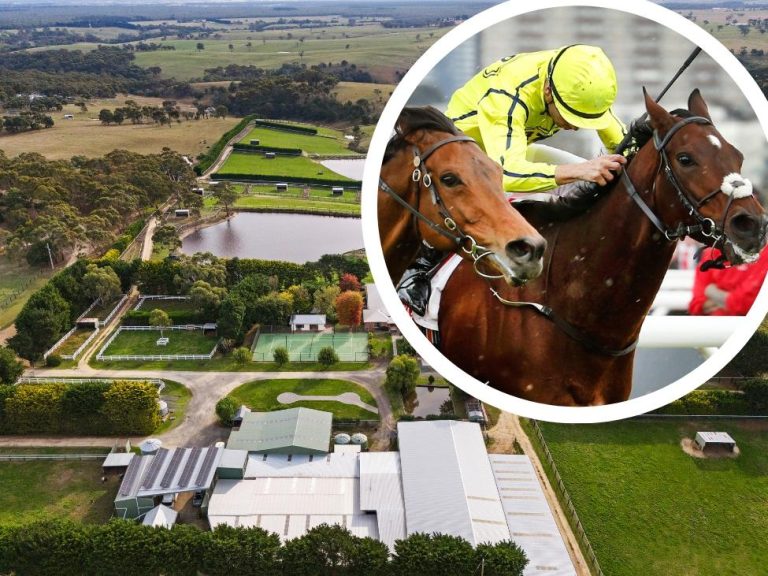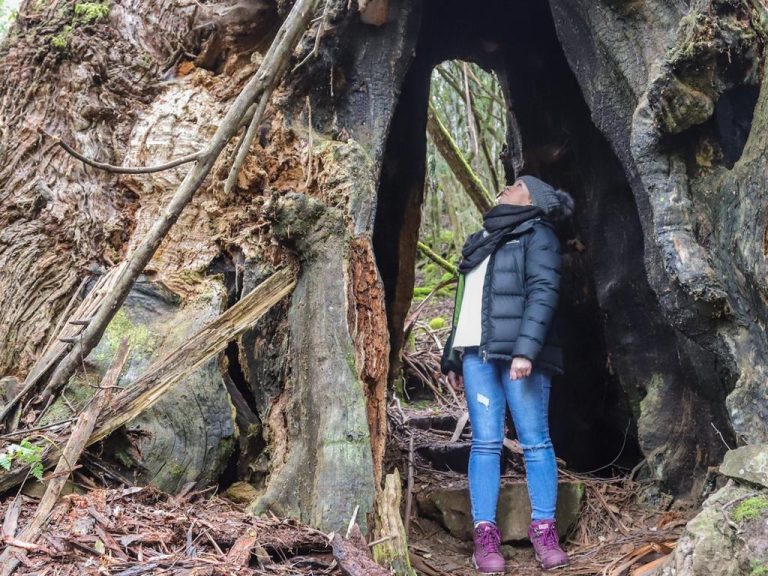Oaky River hydro site offers rare opportunity

A hydropower station in the New England Tablelands of NSW that operated as the Oaky River Hydro Scheme for nearly 60 years has hit the market amid hype around the future potential of hydro energy storage.
The 214ha Oaky River hydro site resides between Armidale and Coffs Harbour outside the township of Wollombi. It’s a spectacular spot where rolling hills and eucalypt forests descend steeply to 8.2km of river frontage.
During the 1950s, Albanian civil engineer Zihni Buzo designed and oversaw the implementation of the dam and hydropower scheme here, which supplied renewable energy to the local area from 1956 until 2013, when severe flooding burst the banks and damaged the infrastructure.

The Oaky River hydro site is a renewable energy development opportunity located in the New England Region of the NSW Northern Tablelands. Picture: realcommercial.com.au/for-sale
State-owned electricity infrastructure operator Essential Energy has owned the site for over 60 years. Now CBRE’s Boo Harvey, Edward O’Dwyer and David Goodfellow are managing its sale via a two-stage expressions of interest campaign.
Mr Goodfellow said while the power generation system has been inactive for nearly a decade, much of the infrastructure is in place, including five hydro turbines, two 2.7MW power generators, two weatherboard residences and sheds.
The dam itself holds about 2780 megalitres of water.
“We just need someone to buy it, rebuild the dam wall, and then we can start creating power again on the site,” he said.
Rare opportunity
The New England region is enjoying substantial population growth, fueling demand for energy.
In response, the NSW government has identified the New England Renewable Energy Zone, with the aim of supporting the development of up to 8000 megawatts of renewable generation capacity.
Mr Goodfellow said hydro is often overlooked as a renewable energy source.
“There are a lot of wind turbines and solar panels going in, but there’s not a lot of new hydro being built. And that’s why we think there’s going to be some very good interest in this site.
“These opportunities don’t come up very often,” he said.

The Northern Tablelands is characterised by its cool temperate climate, with annual rainfall of 938mm. Picture: realcommercial.com.au/for-sale
Mr Goodfellow anticipates interest to come mainly from energy operators as well big institutions who want to be seen as investing in renewable power generation — or perhaps a mixture of both.
“An energy generation company might buy this, but then source some finance from a big institution to do the redevelopment of the site,” he said.
Mr Goodfellow predicts the site’s picturesque landscape could also attract very different types of buyers, ones keen to develop other activities such as bio-conservation, carbon sequestration projects or even retreat-style eco-tourism.
“The block is really quite stunning, with a massive waterfall immediately below the dam. It would be a spectacular getaway for people,” he said.
The power of hydro
When it comes to Oaky River’s power generation potential, Professor Andrew Blakers, foundation director of the Australian National University Centre for Sustainable Energy Systems, said it was “invisible in the scheme of things” and would not stand up against solar and wind power generating systems.
But Professor Blakers said the site’s potential for hydro energy storage would make it “much more interesting to buyers”.
“As a generation technology, hydro has no significant future in Australia. As a storage technology, it’s a very different story. It’s got an enormous future as large-scale storage to balance solar and wind,” he said.

The site has two weatherboard houses. Picture: realcommercial.com.au/for-sale
Pumped storage hydropower acts like a giant battery and works by using excess renewable energy to pump water uphill to an elevated reservoir when it is sunny and windy, and releasing the water back down the hill through giant turbines that create electricity when it’s still and dark.
Mr Goodfellow said there is potential to build a dam below the power generation site at Oaky River, making pumped storage feasible.
“There’s an opportunity to put in state of the art technology and really set a new standard for hydropower in NSW. It would also create some wonderful opportunities for employment growth in that area,” he said.
Driving Australia’s future
Clean Energy Council chief executive officer Kane Thornton said in late 2021 hydropower’s energy storage capability and its ability to complement the rollout of wind, solar and battery storage will “drive the reliable and secure decarbonisation of the Australian energy sector”.
He said that investors shouldn’t be deterred by the costs in getting hydropower storage schemes going.
“While these projects typically have a high upfront capital cost, investors are willing to spend the money to build new hydropower and to refurbish existing assets,” he said.
“However, to make this investment worthwhile, investors need to know that these projects will recover their investment and receive revenue for the value they provide customers and the energy system.”
But he added that incentives, new investment and network expansion are needed to unlock hydropower’s full potential.







